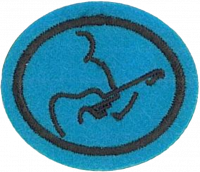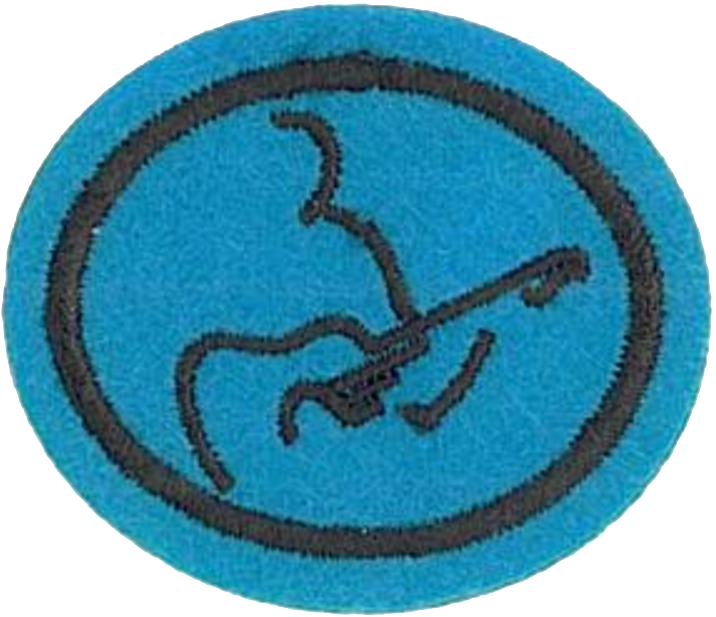Especialidades JA/Guitarra/Respuestas
1
2
3
Electric guitar: There is even more variation in styles when it comes to electric guitars. There are three main body types: the "Les Paul", the "Strat", and the "Super Strat." Most electric guitars (with the exception of hollow-body and semi hollow-body guitars) use a solid body. This means that in order to hear the guitar you need external amplification such as an amplifier or a PA. This means that electric guitars are not as portable as acoustic guitars. However, they are more versatile when it come to the sound it can produce. The electric guitar can be used with different pickups, amps, and effect pedals to achieve many different sounds.
Classical Guitar: Classical guitars are very similar to acoustic guitars but there are some differences. Classical guitars or flamenco guitars use nylon strings. Also, the body tends to be smaller than most acoustic guitars and the neck is thicker. The nylon strings on these guitars give an overall warmer sound than acoustic and electric guitars. This makes it ideal for classical guitar and jazz.
4
- Sound Board/Guitar Top: The top of the guitar body. This is what produces most of the sound in a guitar. Because of this higher quality wood is used on the top that on the sides or back. In electric guitars the wood is not as important as acoustic guitars.
- Pickup: These are devices that pick up the vibrations in the strings or in the wood and turn them into an electronic signal. In electric guitars the pickups are in the body and under the strings. In acoustic/ electric guitars, they are usually installed under the bridge or under the saddle.
- Tone/ Volume knobs: These are potentiometers on the guitar that control the tone or volume of a pickup or set of pickups.
- Pickup selector switch: If a guitar has more than one pickup, there will also be a switch to choose different pickups, combinations of pickups, or pickup configurations.
- Preamp: These are more common on acoustic/electric guitars. Like the tone and volume knobs, they help control the volume and shape the sound before going into an amplifier.
- "Jack": The output that allows the signal of a pickup to go to an amplifier or other device. It is usually a female mono 1/4 inch jack but can also be XLR.
5
Sitting: When sitting the guitarist should make sure that the wrist on his fretting hand is relatively straight. Playing with a bent wrist could cause pain and eventually permanent damage to the joint. Classical guitarist sit with their backs straight, shoulders relaxed, and sitting near the edge of their sear. The right foot should be flat on the floor (for right handed guitar players) and the second food is either on a foot stool or flat on the floor as well. The contour of the guitar rest on left leg. The neck is pointed up. This makes it easier and more comfortable to play on any position in the neck
Other guitarist tend to rest the guitar on the right leg. The posture is very similar.
Standing: When standing the strap should be adjusted so that the guitar is around waist level. The neck should be pointing up.
6
7
On a piano keyboard your high E string is the E just above middle C with your low E being two octaves below that.
8
To make build the C major chord we would use C, which is the first note, E, the third note, and G, the fifth note. So if we wanted to play a C chord we need to hit these three notes. An open C chord is played like so:
e||-0--- <== This is an 'E'
B||-1--- <== This is a 'C'
G||-0--- <== This is a 'G'
D||-2--- <== This is an 'E'
A||-3--- <== This is a 'C'
E||-X--- <== This string is not played in an open C chord.
To make a C minor chord we use the same scale but the third note is flat. In the case of the C major chord, we used 'C', 'E', 'G'. To make it a minor chord we would use 'C', 'Eb', and 'G'. One way to play this chord is:
e||-3--- <== This is an 'G'
B||-4--- <== This is a 'Eb'
G||-5--- <== This is a 'C'
D||-5--- <== This is an 'G'
A||-3--- <== This is a 'C'
E||-X--- <== This string is not played in an open C chord.
It should be noted that because of the way the guitar fretboard is built there are many ways, voicings, to play the same chord.
CAGED Method
Another thing that should be noted is because of the way the fretboard is built, chord shapes can be moved. This i an easy way to find all the major and minor chords without necessarily memorizing all the chords. There are three requirements for this: 1. know a little bit of music theory, 2. now the basic chord shapes, and 3. know how to play bar chords.
When you bar a chord it is like you are using a capo or moving the nut, essentially changing the pitch of that note or chord. Because of this, you can build a chord using only the root note and the basic chord shapes. For example, this is an 'E' major chord:
e||-0---
B||-0--- This is the "E major" shape
G||-1---
D||-2---
A||-2---
E||-0--- <== Using this method we only look at the root.
In this case the root note is "E". Before we start building chords we first have to see how the fretboard is organized. On the fretboard, the notes are in half step intervals. Since the root note is on the low E string in the "E" shape, if we learn the notes on the "E" string, we can use the E shape to find the chord.
This is the low E string:
E||-F-|-F#-|-G-|-G#-|-A-|-A#-|-B-|-C-|-C#-|-D-|-D#-|-E-|
0 1 2 3 4 5 6 7 8 9 10 11 12
*The numbers are the frets.
**Note that there is a half step between E and F and between B and C
So to find a chord we simply find the root note and play the shape. For example, if you wanted to play a G# major chord, you would bar on the 4th fret and play an "E" shape like so:
e||-4---
B||-4--- This is the "E major" shape
G||-5---
D||-6---
A||-6---
E||-4--- <== The root note is G#
The same can be done with the "E minor" shape. This is the "E minor" shape:
e||-0---
B||-0--- This is the "E major" shape
G||-0---
D||-2---
A||-2---
E||-0--- <== Using this method we only look at the root.
So to play a G# minor we would again bar the 4th fret and apply the "E minor" shape like so:
e||-4---
B||-4--- This is the "E minor" shape
G||-4---
D||-6---
A||-6---
E||-4--- <== The root note is G#
This can be done with all the basic Chord shapes: C, A, G, E, and D. This is one of the reasons it is called the CAGED method. This is however a very broad topic and guitarist are encourage to find out more on their own or through a tutor.
9
10
11
Steel: Steel strings can be made using many different materials. Some of the most common are steel and brass. When you buy steel strings they come in gauges rather then tensions. For example, you can get a set where the high E string is 0.09mm or 0.10 mm. The bigger the gauge the better the sound. However, increasing the gauge also makes it harder to play. While nylon strings are warm, steel strings tend to be very bright, and have less pronounced bass notes. This makes them good for most styles of music, and thus they are more versatile than nylon strings.
12
13
13a
13b
13c
13d
14
| Tip for earning from home during the pandemic | |
| This would have to be done via video conferencing. Note that it is very difficult to play music together when the musicians are remotely connected. The difficulty arises because there is a delay between strumming on one end, and hearing on the other. This delay is not noticeable when conducting a conversation, but it is very difficult to overcome when trying to play or sing together. |



